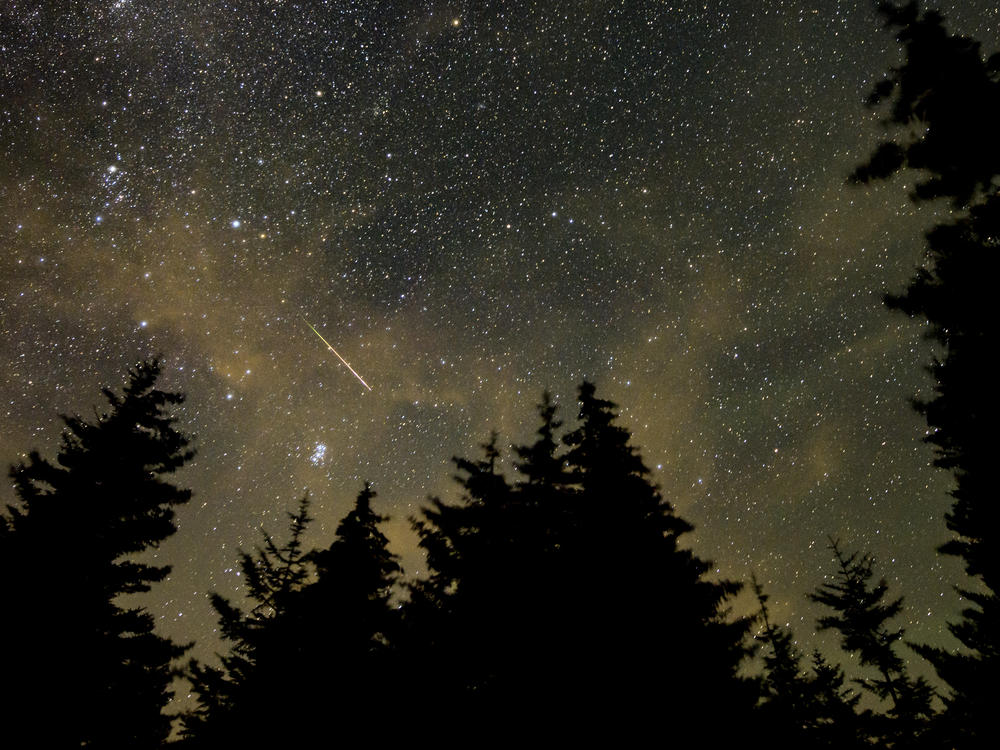Section Branding
Header Content
An astronomer thinks alien tech could be on the ocean floor. Not everyone agrees
Primary Content
Eight years ago, a meteor believed to have been 2 feet long entered Earth's atmosphere at more than 100,000 miles an hour before exploding into tiny, hot fragments and falling into the South Pacific Ocean.
Some scientists believe it came from another star system, which would make it the first known interstellar object of its size to impact Earth.
Now, professor Avi Loeb, of the Harvard-Smithsonian Center for Astrophysics, is planning an expedition to retrieve fragments of the meteor from the ocean floor. By analyzing the debris, he is hoping to determine the object's origins — even going so far as to make the extraordinary suggestion that it could be a technological object created by aliens.
Yet astronomers are wary of his claims, citing a lack of data on the object and insufficient evidence to support his bold conjectures about alien life.
What is he looking for?
The object that Loeb is searching for, designated CNEOS 2014-01-08, was detected in 2014 by a network of satellites used to monitor the skies for potentially dangerous asteroids. Using data published by NASA, Loeb and Amir Siraj, then a Harvard University undergraduate studying astrophysics, first suggested the object came from outside our solar system in 2019.
"It moved very fast, roughly 40 kilometers per second when it exploded in the lower atmosphere," Loeb said. "And from that, we can infer that it was moving much too fast to be bound to the sun."
Loeb and Siraj submitted a paper making their case to a peer-reviewed astronomy journal. The paper was rejected because their data was incomplete. Some of the data relied on observations from classified missile detection systems, making Loeb and Siraj's estimates of the object's velocity impossible for reviewers to verify.
But in April, a memo published by U.S. Space Command seemed to confirm that the object came from another star system.
Now, Loeb is launching a $1.5 million privately funded expedition to retrieve pieces of the meteor from the ocean floor. Based on data from the Defense Department, Loeb has focused his search to an area of nearly 40 square miles.
"It's just like mowing the lawn," Loeb said. "We are planning to use a sled with a magnet that will scoop a very thin layer off the top of the muck."
He says that testing the composition of the object could determine if it resembles those found in our solar system.
"There is also the possibility that it will be made of some alloy that nature doesn't put together, and that would imply the object is technological," Loeb said. "If you ask what my wish is, if it's indeed of artificial origin, and there was some component of the object that survived, and if it has any buttons on it, I would love to press them."
Other astronomers are very skeptical
Many astronomers dismiss the idea of the object being technological, saying there are far simpler and far more likely natural explanations. And some are hesitant to conclude the meteor even came from outside our solar system.
The biggest problem is the data itself. It's difficult to actually observe small, fast objects in the atmosphere.
"If you're a satellite and you're looking at a meteor ... you can get the left-to-right motion, but it's hard to tell if it's coming towards you or moving away from you," said Steve Desch, an astrophysics professor at Arizona State University. He said this would make estimates of the object's velocity prone to error, making it hard to confirm if it were interstellar.
The data is also "sanitized," Desch said. Because some of the data comes from a network that includes classified military satellites, the available data is stripped of information that could reveal U.S. defense capabilities, such as error bars that indicate precision of measurements.
Astronomer Robert Weryk studies near-Earth objects detected by the Pan-STARRS telescope, and he said the Space Command memo wasn't enough to draw firm conclusions about the object's origins.
"I kind of have to take it with a grain of salt," he said. "I understand why they won't release more information, but I think that would be essential ... to actually come to a conclusion about this object being interstellar."
"I think there's a case to be made that this could be interstellar in origin," Meenakshi Wadhwa, a planetary scientist at Arizona State University, said. "[But I would] add the caveat that none of the work so far on this is in the peer-reviewed literature. ... The science has not really been vetted to the extent that I would like to see it vetted."
Finally, Loeb's critics point to difficulties with the expedition itself.
"This is what I would generously call a dubious plan," said Ethan Siegel, an astrophysicist and science communicator who has vocally criticized Loeb's past claims about aliens.
Siegel and Desch agree there are too many variables — atmospheric winds and ocean currents, for example — to confidently pinpoint a search location. The search team would be looking for "only grams of material" after it had been "swirling around on the ocean floor for years," Desch said.
"If you want to invest in renting a submarine and going down to the bottom of the ocean on ... a wild-goose chase, you can do it," Siegel said. "If you want to take all of your money and dump it into the middle of the ocean, you can do that too."
Loeb is undeterred. To him, the expedition is a chance at making history. If Loeb finds pieces of the meteor and it is of interstellar origin, it could be the first time humans get their hands on an interstellar object of its size.
In response to his critics, Loeb describes his work as "interstellar archaeology."
"My point is if a cave dweller were to find a cellphone, the cave dweller would argue the cellphone is a rock of a type that we've never seen before," he said.
"And the only way to find out is to press some buttons on this cellphone and realize that it records your voice, it records your image. Then it will be clear that it is not rock."
Copyright 2022 NPR. To see more, visit https://www.npr.org.



